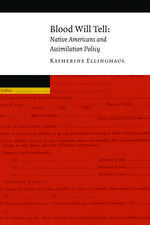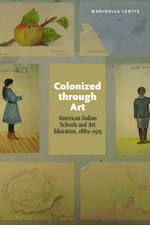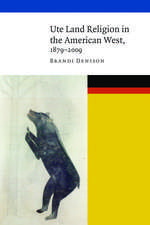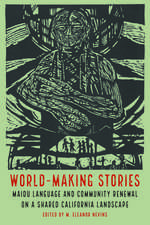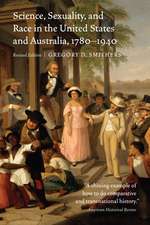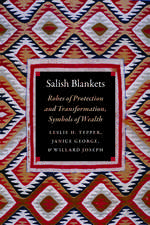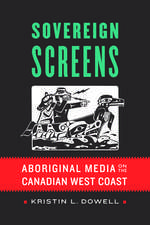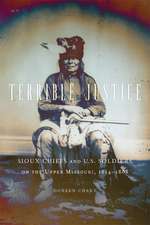Ojibwe Discourse Markers
Autor Brendan Fairbanksen Limba Engleză Hardback – 30 apr 2016
Published through the Recovering Languages and Literacies of the Americas initiative, supported by the Andrew W. Mellon Foundation
Brendan Fairbanks examines the challenging subject of discourse markers in Ojibwe, one of the many indigenous languages in the Algonquian family. Mille Lacs elder Jim Clark once described the discourse markers as “little bugs that are holding on for dear life.” For example, discourse markers such as mii and gosha exist only on the periphery of sentences to provide either cohesion or nuance to utterances. Fairbanks focuses on the discourse markers that are the most ubiquitous and that exist most commonly within Ojibwe texts.
Much of the research on Algonquian languages has concentrated primarily on the core morphological and syntactical characteristics of their sentence structure. Fairbanks restricts his study to markers that are far more elusive and difficult in terms of semantic ambiguity and their contribution to sentences and Ojibwe discourse.
Ojibwe Discourse Markers is a remarkable study that interprets and describes the Ojibwe language in its broader theoretical concerns in the field of linguistics. With a scholarly and pedagogical introductory chapter and a glossary of technical terms, this book will be useful to instructors and students of Ojibwe as a second language in language revival and maintenance programs.
| Toate formatele și edițiile | Preț | Express |
|---|---|---|
| Paperback (1) | 212.89 lei 6-8 săpt. | |
| Nebraska – 30 apr 2017 | 212.89 lei 6-8 săpt. | |
| Hardback (1) | 490.52 lei 6-8 săpt. | |
| Nebraska – 30 apr 2016 | 490.52 lei 6-8 săpt. |
Preț: 490.52 lei
Nou
Puncte Express: 736
Preț estimativ în valută:
93.87€ • 97.88$ • 78.02£
93.87€ • 97.88$ • 78.02£
Carte tipărită la comandă
Livrare economică 21 martie-04 aprilie
Preluare comenzi: 021 569.72.76
Specificații
ISBN-13: 9780803299337
ISBN-10: 0803299338
Pagini: 222
Ilustrații: 1 glossary
Dimensiuni: 152 x 229 x 24 mm
Greutate: 0.48 kg
Editura: Nebraska
Colecția University of Nebraska Press
Locul publicării:United States
ISBN-10: 0803299338
Pagini: 222
Ilustrații: 1 glossary
Dimensiuni: 152 x 229 x 24 mm
Greutate: 0.48 kg
Editura: Nebraska
Colecția University of Nebraska Press
Locul publicării:United States
Notă biografică
Brendan Fairbanks is an assistant professor of American Indian studies at the University of Minnesota. He is the coeditor of Chi-Mewinzha and is on the editorial staff of the digital Ojibwe People’s Dictionary.
Cuprins
Preface
Acknowledgments
1. Introduction and background
1.1. The language
1.2. Why study Ojibwe discourse markers?
1.3. Methodology
1.4. Orthography
2. What is a discourse marker?
2.1. Schiffrin’s definition of discourse markers
2.2. Relevance theorists’ view of discourse markers
2.3. Cross-linguistic data
2.3.1. Position
2.3.2. Clitics and affixes
2.3.3. tam (tense-aspect-mode) systems
2.3.4. Simultaneous textual and interpersonal functions of discourse markers
2.4. Defining discourse markers
3. Ojibwe discourse markers
3.1. Discourse connectives
3.1.1. Initial position
3.1.1.1. inashke
3.1.1.2. miinawaa
3.1.1.3. onzaam
3.1.1.4. dibishkoo
3.1.1.5. mii dash
3.1.2. Second position
3.1.2.1. idash as a contrastive marker
3.1.2.1.1. Digressions
3.1.2.1.2. Backgrounding and foregrounding
3.1.2.1.3. idash in adjacency pairs
3.1.3. Preverbs
3.1.3.1. Relative preverb izhi
3.2. Mystery particles
3.2.1. Initial position
3.2.1.1. mii as a veridical marker
3.2.1.2. mii as a command softener
3.2.1.3. awenh, inenh
3.2.1.4. aaniish
3.2.2. Second-position mystery particles
3.2.2.1. isa
3.2.2.1.1. isa as a marker of closings
3.2.2.1.2. isa as a marker of relinquishment
3.2.2.1.3. isa as a marker of conclusory gists
3.2.2.1.4. isa as a marker of resultant action
3.2.2.1.5. isa as a position strengthener
3.2.2.1.6. isa as a placeholder
3.2.2.1.7. sa go
3.2.2.2. gosha
3.2.2.3. sha
3.2.2.4. da
3.2.2.5. bina
3.2.2.6. goda
3.2.2.7. naa
3.2.2.7.1. Second-position discourse clusters with naa
4. Conjunct order as a discourse-marking device
4.1. Sentence-level use of conjuncts
4.1.1. Dependent clauses
4.1.2. Temporal immediacy and the connective feature of the conjunct
4.1.3. Situational immediacy
4.2. Discourse use of conjuncts
5. Conclusion
Notes
Glossary
References
Index
Acknowledgments
1. Introduction and background
1.1. The language
1.2. Why study Ojibwe discourse markers?
1.3. Methodology
1.4. Orthography
2. What is a discourse marker?
2.1. Schiffrin’s definition of discourse markers
2.2. Relevance theorists’ view of discourse markers
2.3. Cross-linguistic data
2.3.1. Position
2.3.2. Clitics and affixes
2.3.3. tam (tense-aspect-mode) systems
2.3.4. Simultaneous textual and interpersonal functions of discourse markers
2.4. Defining discourse markers
3. Ojibwe discourse markers
3.1. Discourse connectives
3.1.1. Initial position
3.1.1.1. inashke
3.1.1.2. miinawaa
3.1.1.3. onzaam
3.1.1.4. dibishkoo
3.1.1.5. mii dash
3.1.2. Second position
3.1.2.1. idash as a contrastive marker
3.1.2.1.1. Digressions
3.1.2.1.2. Backgrounding and foregrounding
3.1.2.1.3. idash in adjacency pairs
3.1.3. Preverbs
3.1.3.1. Relative preverb izhi
3.2. Mystery particles
3.2.1. Initial position
3.2.1.1. mii as a veridical marker
3.2.1.2. mii as a command softener
3.2.1.3. awenh, inenh
3.2.1.4. aaniish
3.2.2. Second-position mystery particles
3.2.2.1. isa
3.2.2.1.1. isa as a marker of closings
3.2.2.1.2. isa as a marker of relinquishment
3.2.2.1.3. isa as a marker of conclusory gists
3.2.2.1.4. isa as a marker of resultant action
3.2.2.1.5. isa as a position strengthener
3.2.2.1.6. isa as a placeholder
3.2.2.1.7. sa go
3.2.2.2. gosha
3.2.2.3. sha
3.2.2.4. da
3.2.2.5. bina
3.2.2.6. goda
3.2.2.7. naa
3.2.2.7.1. Second-position discourse clusters with naa
4. Conjunct order as a discourse-marking device
4.1. Sentence-level use of conjuncts
4.1.1. Dependent clauses
4.1.2. Temporal immediacy and the connective feature of the conjunct
4.1.3. Situational immediacy
4.2. Discourse use of conjuncts
5. Conclusion
Notes
Glossary
References
Index
Recenzii
“Discourse markers, a major aspect of Ojibwe, as Brendan Fairbanks notes, are among the elements that make teaching and learning Ojibwe as a second language particularly challenging. The author’s insightful analysis of the nuances they bring to expression will greatly aid instructors and adult learners in particular.”—M. Naokwegijig-Corbiere, assistant professor in the Department of Indigenous Studies, University of Sudbury
“In Ojibwe Discourse Markers the author has tackled a challenging and poorly understood area of Ojibwe grammar. Grounding his study in authentic Ojibwe data from multiple sources, Brendan Fairbanks has made a valuable contribution to our knowledge of this important Algonquian language.”—John O’Meara, dean and faculty of education at Lakehead University in Ontario and author of Delaware-English/English-Delaware Dictionary



